Simplifying the Rubber Dam
Rubber dams can bring back bad memories for many dentists. Most of us had to use them in school or our training programs and swore that we would never use them in the “real world.”
Early in my career, I had utter disdain for rubber dams and avoided them at all costs. However, I now routinely use them for a host of different procedures. Over time, I realized there are fundamentals to making using a rubber dam efficient, effective, and practical.
This has become especially true through the onset of the new coronavirus pandemic, as dentists have looked for ways to reduce aerosols while performing emergency treatment. In their recent algorithm for treating emergency patients during the COVID-19 pandemic, the ADA has included rubber dam use with a high-volume saliva ejector to reduce the spread of the highly contagious virus.
Using a rubber dam can minimize the aerosolized particles produced during patient care. This helps to keep our teams safe when providing emergency care to patients who may spread viruses and other infectious diseases through airborne particles.
When Are Rubber Dams Useful?
Many different modern isolation systems are available for dentists, ranging from basic cotton roll isolation to more sophisticated isolation mouthpiece evacuation systems, such as Isolites. The rubber dam dates back to the mid-1800s, but it is still the ideal isolation system for reducing airborne particles and is still helpful in specific clinical situations today.
Rubber dams can be very useful for everyday restorative dentistry procedures, such as cases where deep carious lesions present a risk of pupal exposure, restorative procedures next to recent extraction sites, and anterior cases where tissue retraction is necessary.
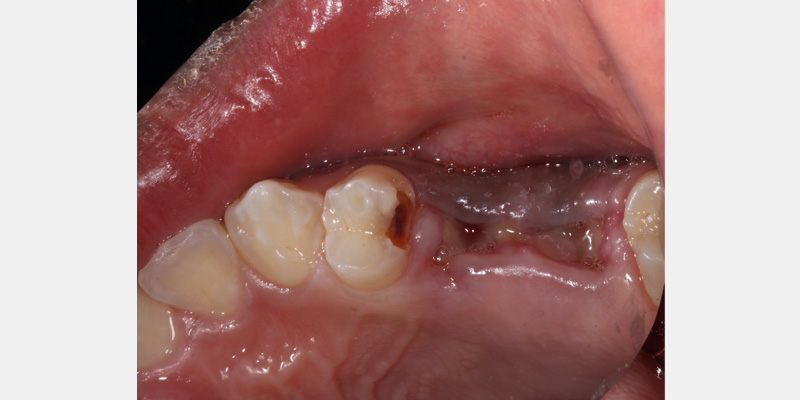
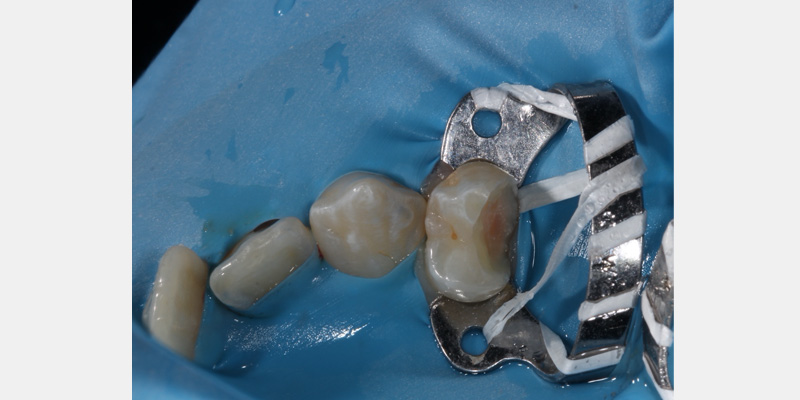
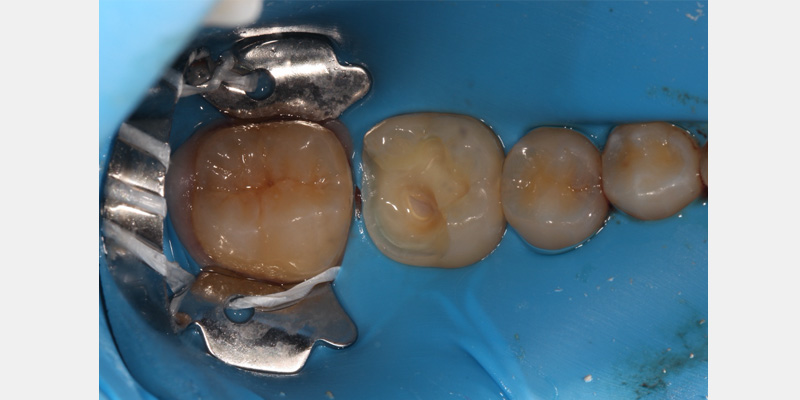
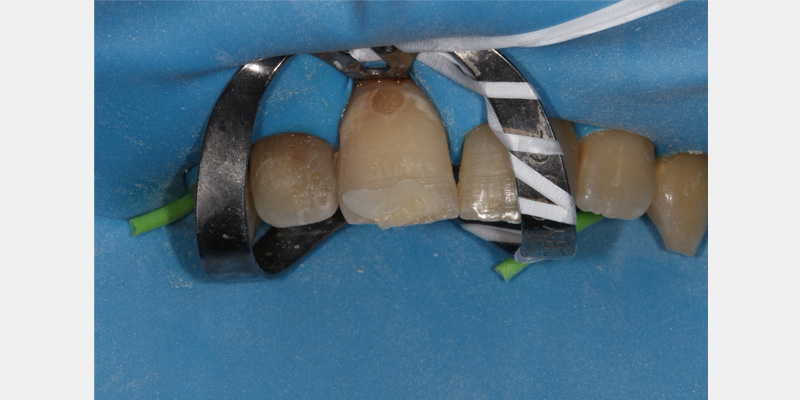
Furthermore, when caustic solutions like hydrofluoric acid are used intraorally for ceramic repairs, rubber dam isolation prevents damage to the adjacent tissues. Rubber dam usage is still considered the standard of care for specific procedures, such as endodontic therapy.
Equipment to Simplify Placing and Securing the Dam
Looking back at why rubber dams used to be the bane of my existence, I realize many of my frustrations came from the fact that I didn’t understand the equipment to use to effectively place the dam.
One of my most significant issues was using the wrong clamp. There are many different clamps on the market, each of which can work well when used correctly. The two main categories of clamps are “winged” and “wingless.” Winged clamps have an extra lip built into the clamp design that can aid in retracting the dam, but they are bulkier than wingless clamps.
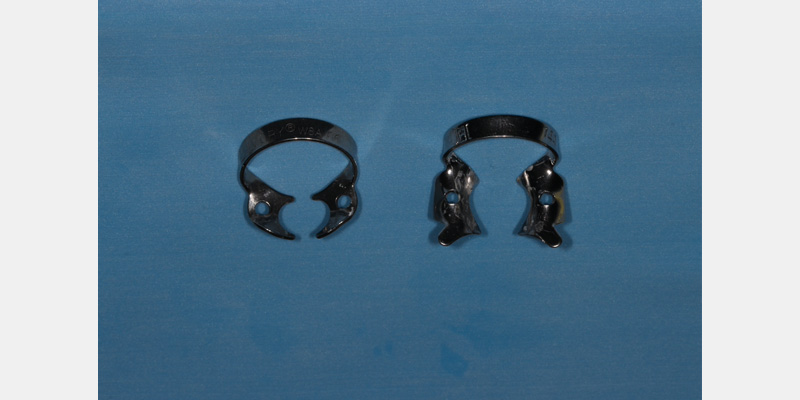
Both wingless and winged clamps are helpful. Selecting one over another is solely a matter of preference. In general, I’ve found the following clamps to be most useful in our day-to-day practice:
- W8A for maxillary molars
- 14 A or W14 for mandibular molars
- 12A for mandibular right molars, 13A for mandibular left molars
- 2 for premolars
- 9 for anteriors where retraction on the facial is needed for cavity preparation
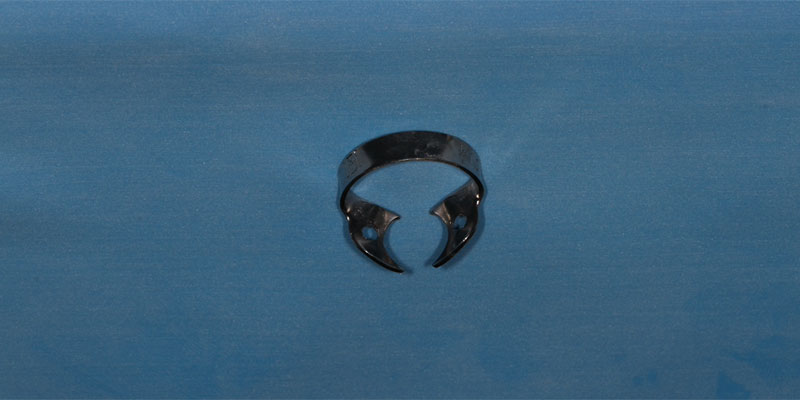
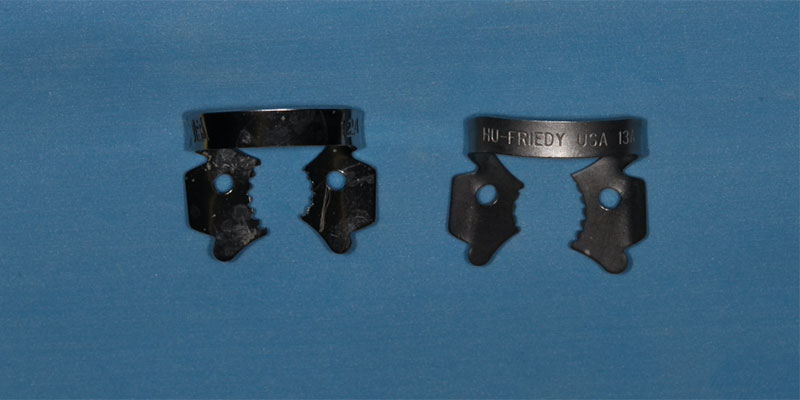
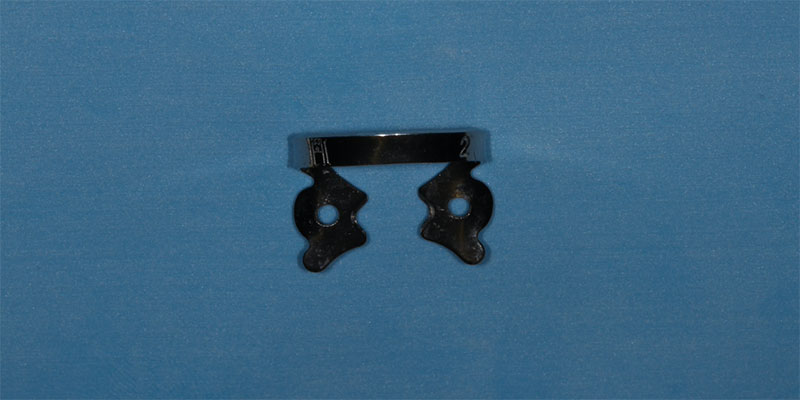
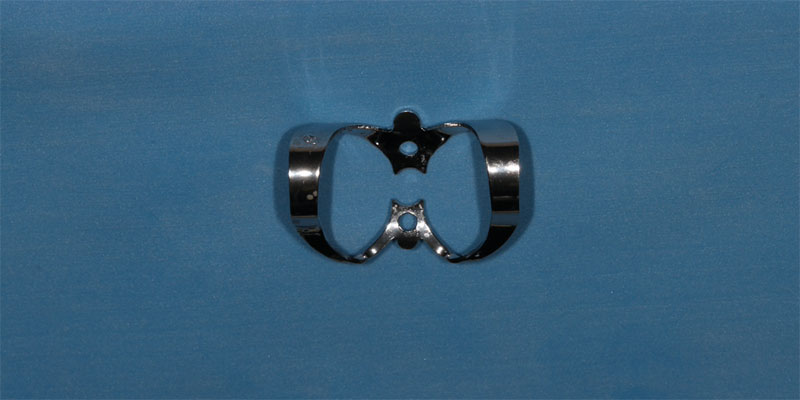
Clamps can fracture over time due to wear and tear. This most commonly occurs at the clamp’s bow. To avoid a fractured clamp becoming an aspiration risk, it’s recommended to ligate floss through one hole, around the bow, and through the opposing hole in the clamp.
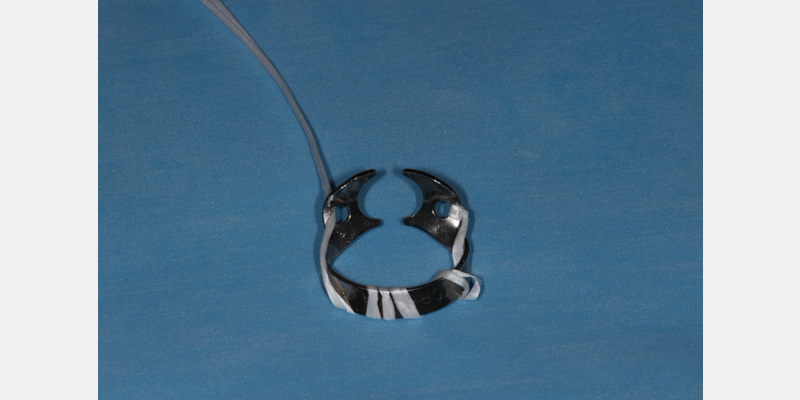
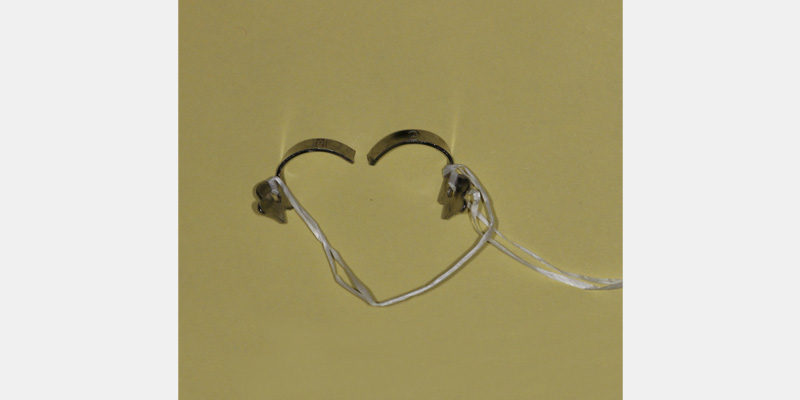
Another common issue is the leakage of oral fluids through the dam. One way to mitigate this is by selecting the proper-sized holes for the teeth being isolated.
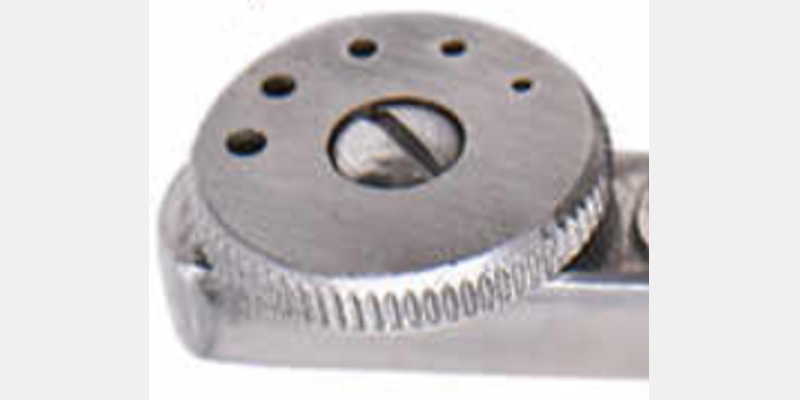
The first, largest hole is useful for molars holding the clamp. The second largest hole is useful for unclamped molars or clamped premolar teeth. The third hole is suitable for premolars, the fourth for canines and maxillary central incisors, and the fifth and smallest is useful for maxillary lateral incisors and mandibular incisors.
Knowing where to place the holes can also help minimize the chances of leakage and increase the efficiency of placing the dam. There are various templates and stamps on the market that can help determine where holes should be punched in the dam.
In general, holes should be about 4.0-6.0 mm apart to ensure that the rubber dam isn’t too stretched out or too loose between adjacent teeth. For patients with malposed or crowded teeth, diagnostic casts of the patient can be used instead of a template to customize the location of the holes in the rubber dam.
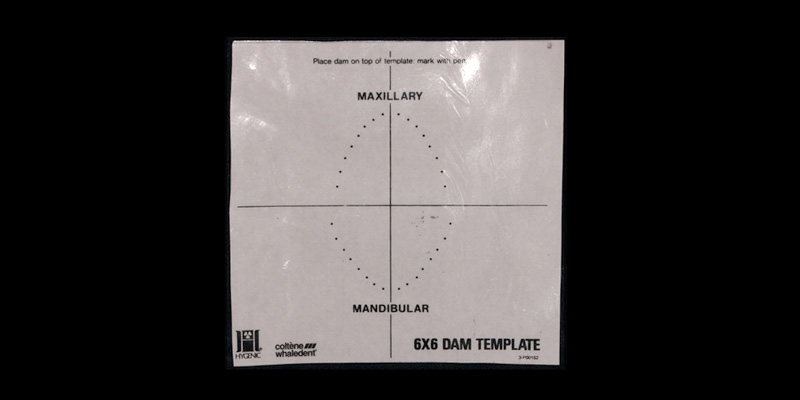
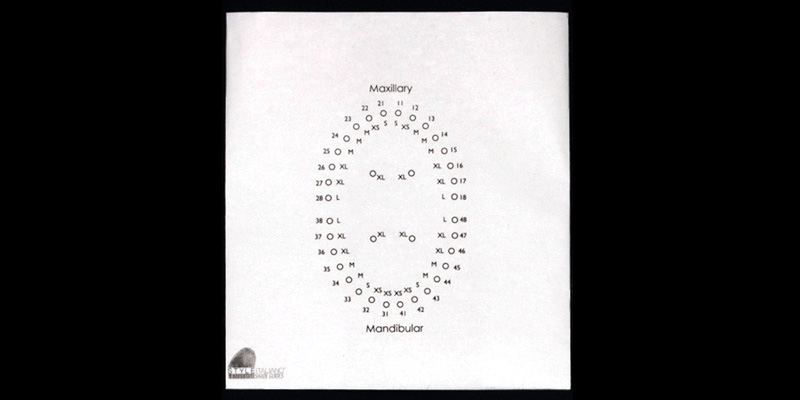
Invariably, leakage may still occur. After the rubber dam is placed, a caulking material can seal any areas that may still have leakage. Various products are available on the market; however, unbonded composite can also be placed and light-cured to act as a caulking agent.
Techniques to Simplify Placing and Securing the Dam
Placing the dam intraorally can also present a challenge since the dam can fold upon itself when trying to place it on the teeth. To simplify this, the dam can be attached to the frame before it is placed in the mouth. This keeps the dam taunt, making it easier to facilitate placement intraorally.
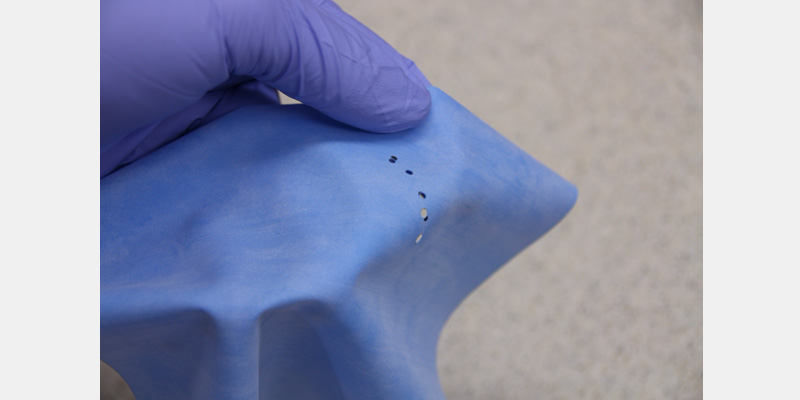
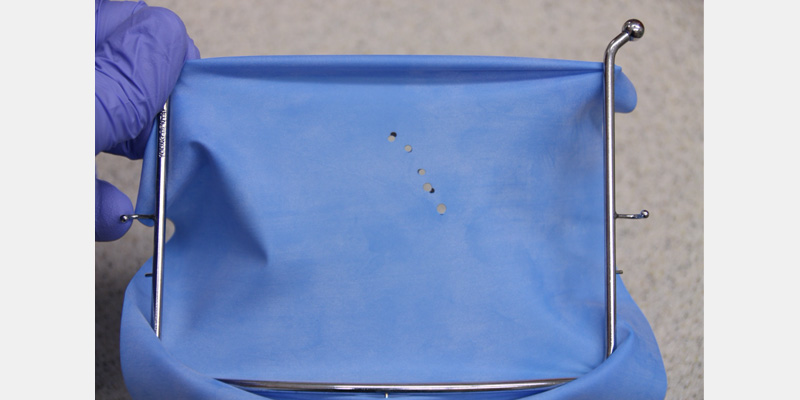
While it is not always necessary, a lubricant can facilitate the placement of the dam. Various materials, from glycerin to shaving cream to soap, have been suggested for lubricating the dam. Vaseline should be avoided since it can weaken the dam material, which leads to ripping and tearing of the rubber dam.
Floss should be used to push the dam through the contact areas of the teeth. After passing through the contact point, the floss can be used to help invert the dam by gently working the floss in to the gingival sulcus. Pulling the floss out buccally, rather than back through the contact point, can help minimize the risk of having the dam dislodge from the tooth.
In some instances, light or open contacts may exist between adjacent teeth, which can present a challenge for securing the dam. Fabricating a floss ligature using a square knot can help secure the dam around the tooth. If this does not work, a thicker material (such as a Wedjet) can be used to hold the dam in place. Alternatively, a corner of the dam can be cut off and used interproximally to secure the dam.
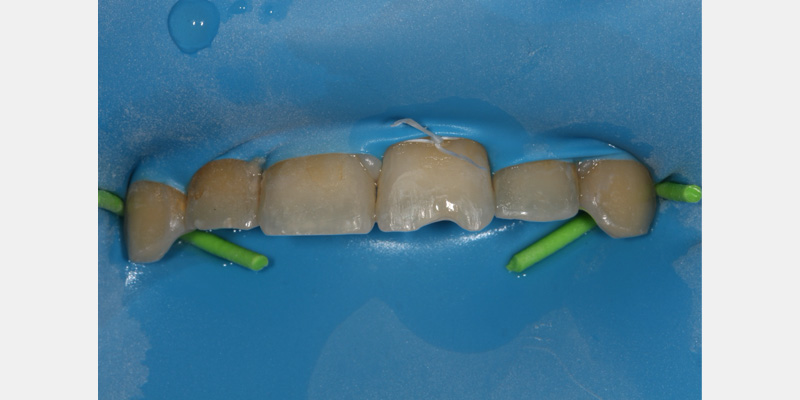
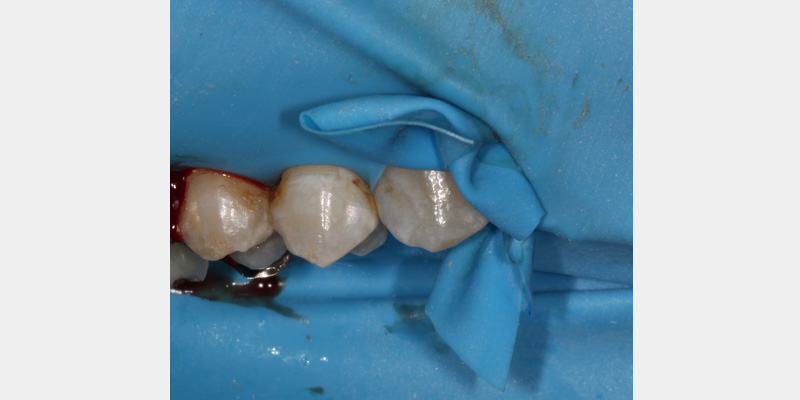
Using a rubber dam doesn’t have to be a challenge. Knowing the right materials and techniques can simplify the process, making dentistry easier for us and our patients.
FOUNDATIONS MEMBERSHIP
New Dentist?
This Program Is Just for You!
Spear’s Foundations membership is specifically for dentists in their first 0–5 years of practice. For less than you charge for one crown, get a full year of training that applies to your daily work, including guidance from trusted faculty and support from a community of peers — all for only $599 a year.

By: Andy Janiga
Date: April 15, 2020
Featured Digest articles
Insights and advice from Spear Faculty and industry experts


